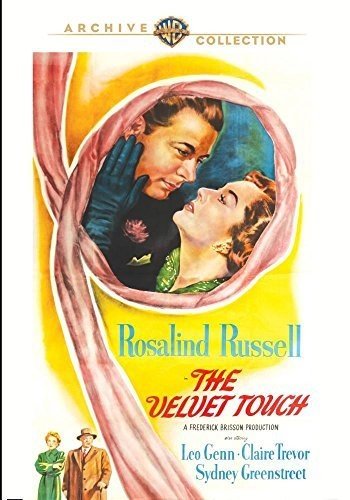
Primarily, there are two types of murder mysteries. The first and foremost variety is that of the whodunit, wherein audiences are just as in the dark as to who committed whatever heinous crime is afoot, and attempt to match wits with the story’s writers. Then there is that less-traveled road, that of the howcatchem drama, wherein we know who did it – because we always see them do it in the beginning of the tale – and then watch as a (usually) seasoned detective puts the pieces together. And, despite its seeming as simplistic as can be, this type of mystery generally takes a much different assortment of writers and performers to pull off, for here, we must not only see things from the detective’s viewpoint, but also from the killer’s.
Several Alfred Hitchcock titles will undoubtedly pop up on your radar when entering this particular foyer. Though, if you’re like me, the first person that may come to mind in this instance would be Peter Falk, who popularized the character of Columbo in the acclaimed long-running TV series of the same name that was broadcast off and on from 1968 to 2003. Interestingly, the previous actors to bring Columbo to life – Bert Freed and Thomas Mitchell, who respectively appeared as the character on live television and onstage in the early ’60s – were of a more “rotund” persona. This definitely opens the door to “fat jokes” instead of the usual “dirty bum” references the late Mr. Falk’s depiction received during the course of his many investigations.
In fact, if Lt. Columbo had originally been brought to life twenty years before Peter Falk first donned a rumpled-up old raincoat with the sole intention of the character being portly, I could think of no better performer to portray him than Sydney Greenstreet. While his filmography was considerably smaller than most of his contemporaries, the good Mr. Greenstreet was generally cast as the big bad guy (literally) in many a classic film noir, matching wits with Humphrey Bogart (whom Peter Falk would later parody perfectly in Murder By Death) on several occasions. Here, however, Sydney plays a considerably nicer – sympathetic, even – individual: that of a sage old police detective who treats a lady like a lady. Even when she’s a cold-blooded murderess.
And that cold-blooded murderess is none other than Rosalind Russell, who stars here as famous Broadway actress Valerie Stanton. A goddess on the stage and a regular prima donna off of it, the story opens with Valerie confronting her longtime producer Gordon Dunning (Leon Ames, sporting a hairstyle that wouldn’t be in for another couple of years or so – way to go, Leon!) calling an end to their circumstantial romantic relationship with a blunt blow to the noggin. But she’s really not to blame in this instance, kids: Gordon was threatening to unleash a number of scandalous lies about her if she carried through with her promise to run away with her new boyfriend (Michael Morrell, whose overall blandness successfully overrides his own second-billing spot).
In short, Valerie is cornered, threatened, and acts accordingly – committing what Lieutenant Columbo would call an “unmeditated murder.” But when she somehow manages to walk through the halls of the theater as the crew – too busy tending to tearing down the setup from their just-closed production – fails to notice her, she begins to think she has walked away scot free with her crime. In time, however, her own conscious, combined with the cunning questions of her kindly admirer Captain Danbury (Mr. Greenstreet), start to fuel the tormented performer’s paranoia. But will her conscious catch up with her in time before the curtain falls on her latest, greatest play, Hedda Gabler – which mimics her very current state – in a finale that eerily foreshadows Birdman: Or (The Unexpected Virtue of Ignorance)?
Claire Trevor is the spurned ex-lover of Mr. Ames whom everybody accuses of the crime, Dan Tobin is the wonderful Broadway gossip columnist/ambiguously gay comic relief, and Frank McHugh, Walter Kingsford, and future big-screen Tarzan Lex Barker (before his infamous marriage to Lana Turner) also star in this charming, well-made RKO Radio Picture, which was reportedly filmed on one of the biggest, most elaborate stage sets of the time. Produced by Ms. Russell’s hubby, Frederick Brisson, this was the only big-screen film directed by Jack (John) Gage (which is a mystery unto itself). The Warner Archive Collection dusts off this recommended rarity, presenting it sans any special features whatsoever, but in a transfer that is quite lovely overall.